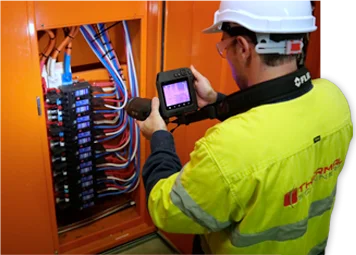Select the Best Options for Thermal Imaging: Some Strategies
Even though thermal imaging has been around for a while, it is generally dismissed as unimportant by homeowners. Contrary to popular belief, thermal imaging has many practical applications for homeowners and can be used to assist preserve homes in perfect shape.
Professionals
in Australia, who specialise in thermal imaging inspections, highlight primary
benefits of using such technology in the home. Have a look!
To What Extent Does Thermal Imaging Help During A Home
Inspection?
Some
problems and faults within homes can be difficult to see with the naked eye,
but thermal imaging can help. The infrared technology used by the equipment
makes it simple to spot problems like mould growth from excess moisture,
electrical and wiring irregularities, bugs, and more. Just a few of the many
compelling arguments in favour of this type of inspection before purchasing a
home are as follows:
Predicting Where Mould and Moisture Will Grow
It's
never pleasant to discover mould in your home, and if you don't take care of
it, it may quickly become dangerous to your health. Darker, stuffier places
like air ducts and laundry rooms are more likely to develop mould and moisture
problems. An inspector can use thermal imaging to look for these unseen areas
of potential mould growth throughout the property. Once these areas are
identified, resolving the issue becomes much less of a challenge.
Identifying Electrical Hotspots
Over
time, the integrity of the house's electrical wiring system degrades. This can
cause electrical hot spots and other abnormalities to occur, which, if ignored,
could cause serious problems like a house fire if not addressed. The inspector
can find all of these electrical hot spots using thermal imaging
technology. Wherever there is damage to the wiring, the image will glow a
brilliant yellow, making it easier to locate the problem area.
Looking For Distinct Flaws in the Construction
Damage
to the house's framework can also be spotted with the aid of thermal imaging.
There will be temperature variations in various parts of the building,
including the walls, floors, ceilings, and roofs. There appears to be an issue
there, possibly involving broken or missing parts of the structure. In the case
of roofs, in particular, thermal imaging can reveal the presence of moisture
accumulation at pinpoint locations, suggesting the presence of a leak.
Efficiency in Use of Energy
Maintaining
a home's energy efficiency should be a top priority for each homeowner.
Utilities costs could rise if this isn't done. If there is heat loss in the
house, thermal scan can
assist find it. The most common places for heat to escape a building are around
doors and windows; by analysing the thermal image, you can determine which
areas are letting out more heat than necessary. We save money in the long run
by making our homes more energy efficient, and if we ever decide to sell, we
could probably get a better price because houses that use less energy are more
desirable.
Conclusion
No one enjoys the thought of having to share their house with bugs and cockroaches that find their way into. An infrared image can identify the temperatures of these numerous pests and creatures in the same way that it can detect moisture and mould. Get in touch with thermal imaging specialists today to arrange for an inspection of your house by one of our qualified professionals.


Comments
Post a Comment